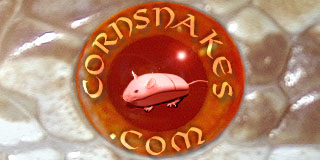slangenbroed
New member
sorry menhir
it is 592 km and it is furser as a was thinking.
it is 592 km and it is furser as a was thinking.
Sorry for the language grammer and spelling.Susan said:After having re-read (at least 3 times due to the language,grammar and spelling barrier) slangenbroed's post explaining what his results have been does sound like he has discovered a new gene. What I don't get is that he only produced 1 out of 26 from the original parents. Those are pretty rotten odds. Of course, it could be one of those rare spontaneous mutations as the results in future generations seem to attest to. It does seem that many people have been screaming "hybrid" at all the new genes lately. But IMO, if I like what the gene does, I don't care where it came from.
PtDnsr said:I've been playing with this all night trying to come up with a scenario where it was a simple recessive (if it was that whole amel and albino thing I posted about earlier) and I couldn't. A new gene would make sense except I can't get around one thing. (Now let's see if I get this right. In 2002 you bred an amel to a normal het amel and got amels, normals and a brown-yellow (buff). You bred this female buff to an amel het caramel in 2005 to test for caramel since many people were saying caramel, amber or het caramel. Those results were amels, normals, yellow-amels (oranges), and buffs. Unless that amel het caramel was actually het for whatever this new gene is, it doesn't make sense that you would visually see it in that generation. I think thats becouse its dominant You would have to breed those F1's from the buff x amel het caramel to reproduce it. I did Is it possible that it would be something that is codominant to wild type at it's locus? I only say this because that would explain having normals and buffs in the same clutch. But the next generations make things tricky with breedings of orange male (from buff x amel het caramel) x sibling buff females This was the F1 orange x orange and Orange x buf resulting in normals amels, buffs and oranges; and orange male x sibling orange female resulting in all oranges. I would breed out to a snake that isn't amel or het for amel I did to lavender result normals and buf and see if you can easily separate it for a few generations - once that is done it can be tested against everything else. Right now there are so many genes in the mix it's crazy. After the first female buff there's the possability for caramel in the mix as well since she was bred to an amel het caramel. It's intriguing to say the least and I'd love to get my hands on it but that's not going to happen anytime.Come and get one
~Katie
No need to apologize! It's really on my end as my one brain cell is working overtime at the moment. With nothing else to occupy it, I'm sure I can get it all straight.slangenbroed said:Sorry for the language grammer and spelling.
I did orange to lavender het amel = amel -orange-Ssthisto said:There's no reason that this hyperxanthic-effect gene ("extra-yellow") can't be a simple dominant-to-wildtype. I wouldn't say it's necessarily Incomplete or Codominant at all.
It's ODD that Orange to Orange produced all orange offspring (since the parent animals can't have been more than het for the hyperxanthic trait) but Murphy thumbs his nose at us like that all the time. I wouldn't be surprised if next year the same cross produced lots of Amels. If it produced all Oranges again, that's different and says there really is something weird going on there, especially with a large clutch.
Does an Orange put to an Amel produce all Orange?
I never bred this combo, but i think the outcome is amel and orange
Orange to orange pruduced orange but the clutch was not to bigg 5 ore 6
Buf het amel x amel = orange -amel -normal and buf
I would also love to play with this gene... I want to know what it does to Anerythristics!
I'd love to come get one...but Daytona is almost out of our budget, nevermind Europe...slangenbroed said:It's intriguing to say the least and I'd love to get my hands on it but that's not going to happen anytime.Come and get one
slangenbroed said:From Orange male x lavender female = 4 normel and 3 buff
This female lavender is bred two years ago agains the male lavender het amel and the outcome was 12 lavenders ,so i think she is not het amel.blueapplepaste said:Do you know 100% that this female is not het amel? If she's 100% not het amel and you're getting these results then it seems we may have a new gene on our hands. And it would be the first dominant one in corn snakes that I'm aware of.
slangenbroed said:This female lavender is bred two years ago agains the male lavender het amel and the outcome was 12 lavenders ,so i think she is not het amel.
Thanks for the possitive reaction if you lived here you get one off these from me. At the moment i give them only to marc vervest in belgium, he is one off the better breeders here.blueapplepaste said:Then she is probably not het amel. Very cool. I hope that it is indeed a new gene on your hands. :cheers:
I remember hearing about this; glad it's still going!
Photo evidence of the clutches would be great; The parents, laying, and all the hatchlings together; I'm sorry to sound doubting but you've got to admit, a new gene is a pretty big claim! Especially one that makes corns that look like rootbeers/creams.
It sounds very exciting though, I wish I could get one too!
